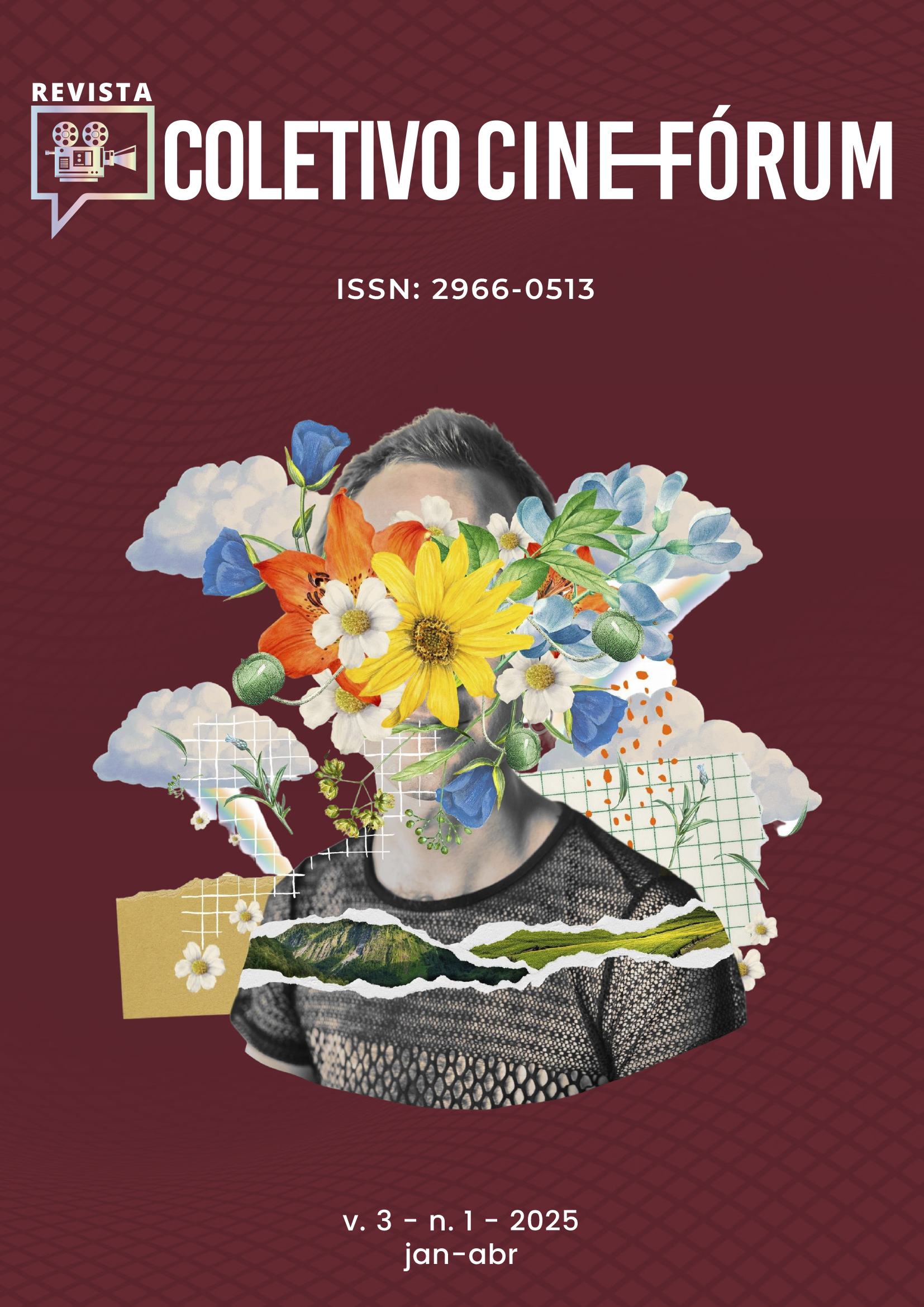RACISM AND MISOGYNY IN THE COSPLAY COMMUNITY
intersectional analysis of comments on the Magic Phyra channel
DOI:
https://doi.org/10.63418/rccf.v3i1.70Keywords:
Cosplay, Fan culture, Intersectionality, Misogyny, RacismAbstract
This paper uses the intersection of race and gender to analyze the comments on the video MY EXPOSED (and prejudice in the cosplay community) by the black digital influencer Magic Phyra. The aim is to observe how intersectional violence occurs in digital and physical spaces dedicated to the cosplay community, what the impacts are, how people who enjoy the practice cope with it, and whether or not they stay. As a theoretical framework, the concepts of cultures, representation, stereotypes, images of control, intersectionality, fan culture, and their problematization are used. As a methodology, the content of the Magic video was analyzed, as well as the 499 public comments on the videos. Six categories of analysis were created, focusing on perceptions of prejudice, racism, misogyny and sexism, skin bleaching, discouragement, and self-acceptance of cosplayers or people who want to start or return to the practice. As a result, intersectional violence is the main factor driving away or discouraging participation in the community. Many black people said they lightened their skin with make-up and photo editing, lost weight, and had surgery to fit in with the expectations of the standard characters. The low level of black representation in audiovisual media limits black people's choices, making them feel insecure when it comes to playing white or yellow characters. However, with digital influence, it's becoming common to find black cosplayers who inspire others, such as Magic Phyra, who emphasizes self-acceptance, adapting cosplay to their bodies, and that the practice should be enjoyable for everyone.
References
AKOTIRENE, K. Interseccionalidade. São Paulo: Pólen, 2019.
CARNEIRO, S. Racismo, sexismo e desigualdade no Brasil. 1. ed. 8. reimpressão. São Paulo: Selo Negro, 2021, p. 63-73.
COLLINS, P. H. Pensamento feminista negro: conhecimento, consciência e a política do empoderamento. Tradução: Jamille Pinheiro Dias. São Paulo: Boitempo, 2019.
CORRÊA, L. G. Interseccionalidade: um desafio para os Estudos Culturais na década de 2020. In: SANTOS, L. H. S; KARNOPP, L. B; WORTMANN, M. L. O que são estudos culturais hoje? Diferentes praticantes retomam a pergunta do International Journal of Cultural Studies. São Paulo: Pimenta Cultural, 2022. p.123-141. Disponível em: <https://www.lume.ufrgs.br/bitstream/handle/10183/253452/001159493.pdf?sequence=1>
_______. G; BERNARDES, M. “Quem tem um não tem nenhum”: solidão e sub-representação de pessoas negras na mídia brasileira. In: CORRÊA, L. G (org.). Vozes Negras em Comunicação: Mídia, racismos, resistências. Belo Horizonte: Autêntica, 2020. v.1, p.203-220.
_______.; SILVEIRA, F. J. N. Representação. In: FRANÇA, V. V; MARTINS, B. G; MENDES, A. M. (org.). Grupo de Pesquisa em Imagem e Sociabilidade (GRIS): trajetória, conceitos e pesquisa em comunicação. Belo Horizonte: PPGCom UFMG, 2014, p. 208-215.
DAVIS, A. Mulheres, raça e classe. Tradução de Heci Regina Candiani. 1. ed. São Paulo: Boitempo, 2016.
FRANÇA, V. V; GONÇALVES, M; MIRANDA, F; OLIVEIRA, L. Cultura. In: FRANÇA, V. V; MARTINS, B. G; MENDES, A. M. (org.). Grupo de Pesquisa em Imagem e Sociabilidade (GRIS): trajetória, conceitos e pesquisa em comunicação. Belo Horizonte: PPGCom UFMG, 2014, p. 104-114.
GOMES, A. M. de S.; CARVALHO, L. B. FANGIRLS: uma análise da relevância cultural à desvalorização a base de gênero a partir do fandom do One Direction no Twitter. Trabalho de Conclusão de Curso (Bacharelado em Jornalismo) – Universidade Federal de Minas Gerais, Belo Horizonte, 2022, p. 136.
GONZALEZ, L. A mulher negra no Brasil. In: GONZALEZ, L. Por um feminismo afro-latino-americano: ensaios, intervenções e diálogos. Rio de Janeiro: Zahar, 2020. p. 75-93.
HALL, S. Cultura e Representação. Rio de Janeiro: Ed. PUC-Rio: Apicuri, 2016. p. 139-223.
JENKINS, B. Marginalization within Nerd Culture: Racism and Sexism within Cosplay. Popular Cultures Studies Journal, v. 8, n. 1, p. 157-174, 2020. Disponível em: https://www.mpcaaca.org/pcsj-volume-8-number-1. Acesso em: 25 jul. 2023.
_______. Textual Poachers: Television Fans and Participatory Culture. Nova Iorque: Routledge, 1992.
KARHAWI, I. Influenciadores digitais: conceitos e práticas em discussão. Revista Communicare da Faculdade Cásper Líbero, v. 17, p. 46-61, 2017. Disponível em: https://static.casperlibero.edu.br/uploads/sites/5/2020/12/comunicare17-especial.pdf. Acesso em: 27 mai. 2024.
NISBETT, G. Don’t Mess With My Happy Place: Understanding the misogyny in Fandom Communities. Mediating Misogyny: Gender, Technology, and Harassment, Denton, v.1, n.1, p.171-188, 2018. Disponível em: <https://link.springer.com/chapter/10.1007/978-3-319-72917-6_9>. Acesso em: 25 jul. 2023.
NUNES, M. R. F. A cena cosplay: vinculações e produção de subjetividade. Revista Famecos, Porto Alegre, v. 20, n. 2, p. 430-445, mai/ago, 2013. Disponível em: https://revistaseletronicas.pucrs.br/ojs/index.php/revistafamecos/article/view/14206. Acesso em: 25 jul. 2023.
PILAR, O. Resistência, imagens de controle e representatividade. In: GUIMARÃES-SILVA, P. (org.). Orientação afirmativa: interseccionalidade e comunicação. 1. ed. Belo Horizonte: Selo PPGCOM/UFMG, 2021. v. 1, cap. 3, p. 51-66.
SILVA, A. B. N. Impacto do colorismo no feminismo negro do Brasil. Caderno Humanidades em Perspectivas, Curitiba, v.4, n.2, 2018. Disponível em: https://cadernosuninter.com/index.php/humanidades/article/view/749. Acesso em: 25 jul. 2023.
VANINI, E. Depois da lacração e do cancelamento, 'exposed' é a moda da vez nas redes. O Globo, 4 jul. 2020. Disponível em: https://oglobo.globo.com/ela/gente/depois-da-lacracao-do-cancelamento-exposed-a-moda-da-vez-nas-redes-24512104. Acesso em: 27 jul. 2023.
Published
Issue
Section
License

This work is licensed under a Creative Commons Attribution-NonCommercial 4.0 International License.
a. Authors retain copyright and grant the journal the right of first publication, with the work simultaneously licensed under the Creative Commons Attribution License, which allows sharing of the work with acknowledgment of authorship and initial publication in this journal.
b. Authors are authorized to enter into additional, separate agreements for non-exclusive distribution of the version of the work published in this journal (e.g., publishing in an institutional repository or as a book chapter), with acknowledgment of authorship and initial publication in this journal.







